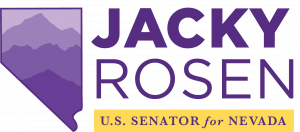WASHINGTON, D.C. – Today, during a hearing of the Senate Committee Commerce, Science, and Transportation, U.S. Senator Jacky Rosen (D-NV) questioned Christopher Ali, Associate Professor in the Department of Media Studies at the University of Virginia; Jon Wilkins, Partner at Quadra Partners; Former FCC Commissioner Michael O’Rielly; and Justin Forde, Senior Director of Government Relations at Midco about definitions for unserved and underserved broadband communities, and support for state flexibility in broadband deployment. A transcript of the Senator’s full exchange can be found below, and a video of the Senator’s full exchange can be found here.
ROSEN: Over the course of the pandemic, broadband has played a role in almost every aspect of our lives – from education to health care to work. Congress has responded by increasing our focus on expanding broadband access, efforts I have strongly supported. But how we define and characterize broadband access also has a significant impact on policy development and resource allocation. As we discussed a little during Ranking Member Wicker’s question, defining terms like “unserved” and “underserved” can have significant implications on where we invest federal dollars, and how we do bring broadband out to everyone.
In 2009, Congress defined “unserved” as any home or business that has a broadband speed of less than 10 megabits down, 1 megabit up… and “underserved” as any home having speeds between 10/1 and 25/3.
Twelve years and one global pandemic later, our current FCC and USDA programs continue to use those same definitions to target critical dollars to deploy broadband infrastructure, despite demands on connectivity like telemedicine, and the need for ever-increasing speeds in everything we do.
So, for everyone on the panel, the pandemic has changed what it means to be unserved or underserved in terms of broadband access. So, should we revisit the definitions and update them on a regular basis so that no community gets left behind? Of course, technology is always changing, what are more appropriate benchmarks to use define if a community is served by broadband networks? Dr. Ali, I guess you can start us off, and then we can go down the line.
ALI: Absolutely. Thank you very much for the question Senator. As I’ve said, I’m a big proponent of the 100/100 symmetric definition. I think what that allows is that we’re connecting our communities with forward-looking technologies, we’re connecting our communities with forward-looking speeds, rather than wiring communities to something that is just good enough for the time being and then leaving them to fend for themselves. So, I think 100/100 as a definition.
O’REILLY: To your answer, and I respect and agree with a lot of the things you’ve said, but I would not change the speed threshold at this time.
WILKINS: I think if the history of broadband shows us one thing, it’s that we always tend to underestimate what’s going to be needed a few years from now. I therefor think about it more as a question of what infrastructure can scale to meet future needs efficiently versus can we just pick a point today and say this is now the right number. And so, I think the performance criteria we think about for these investments might want to consider scalability as a separate measure versus a given speed on a given day.
PORTER: We should keep them where we’re at until those folks that are truly unserved get broadband. Those speeds are more than sufficient. Again, as we’ve mentioned before, the consumer, even during this pandemic, the number one driver of traffic is still downloading streaming services such as Netflix. Downloads are still 14 to 16 times higher, regardless of technology. It’s just not something that consumers are asking for, and not something that we need to go to 100/100 symmetrical speed for at this time.
ROSEN: Thank you, I want to go to one last question. I want to talk about supporting our state’s efforts. I am proud to represent Nevada, a state with a mix of vibrant urban centers and vast rural areas, where more than 80% of our land is federally owned or managed. Deploying broadband therefore requires substantial federal and state coordination and cooperation between numerous state and federal stakeholders. For this reason, Nevada’s Office of Science, Innovation, and Technology broadband office is on the ground advising communities, coordinating with federal, state, and private industry.
Through both the COVID relief bill we passed in December and the American Rescue Plan that President Biden signed into law last week, Congress has made significant investments to expand broadband coverage across this country.
So, I want to ask Dr. Ali and Mr. Wilkins, as we continue to build on those investments, how important is it to give states the flexibility they need – states like mine, who have to deal with DOD, and BLM, and DOE, the Department of Interior, you name it, we have the unique challenges in our state to expand broadband access, and how can we help facilitate better coordination across all areas of government to support broadband deployment?
ALI: That’s a great question, Senator. Thank you for asking it. I am a big proponent of the importance of state broadband offices, exactly like you just said in your home state of Nevada. I think that they can perform incredible roles as being information wholesalers and bringing different stakeholders together, and even identifying stakeholders who might not realize they are stakeholders at the time. I really think – would encourage every state to have a robust and well-funded state broadband office to really diagnose the needs of their communities and counties.
WILKINS: Senator, in the RDOF process, I worked with states ranging from California to Alabama, and in between. And I would just say first, the current federal environment is hard for states and their local stakeholders to navigate, just as you said. The opportunity is so important though. If there are going to be substantial federal investments — I mean first point — those are not going to be probably until next year. Separate from the mapping, I mean we’re just at a point where Congress hasn’t decided if new funds will be made available. Even things like RDOF to our 5G fund are on track for probably next year, not this year. Having states have funds now to start those plans, to amplify the impact of federal investments somewhere down the road is just a huge opportunity because challenges state by state are different.
###

